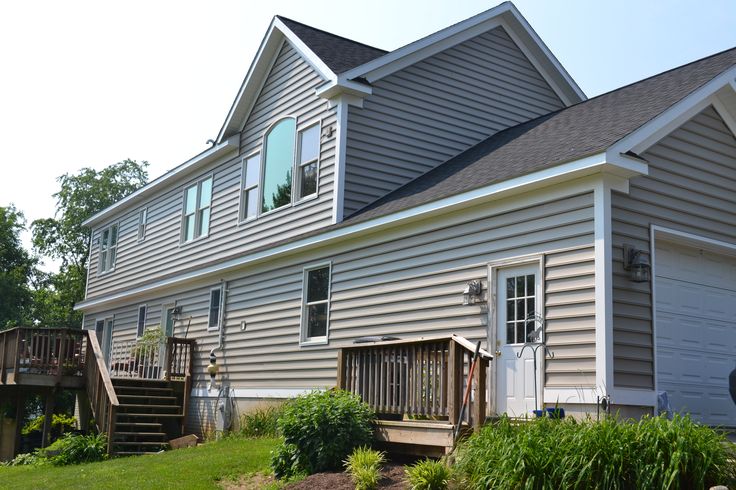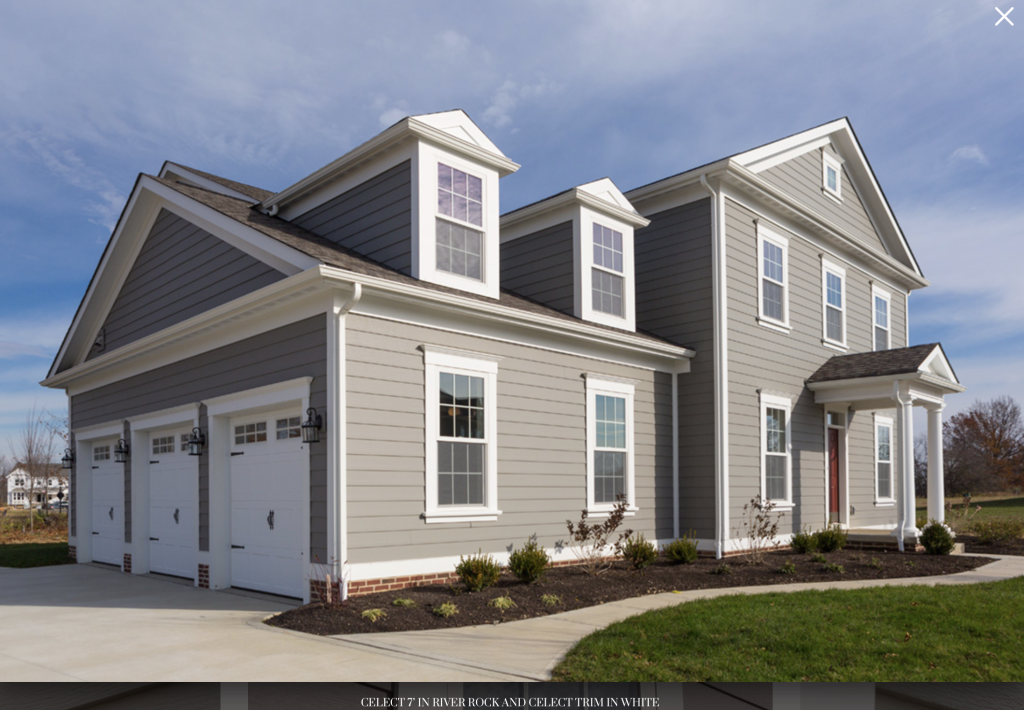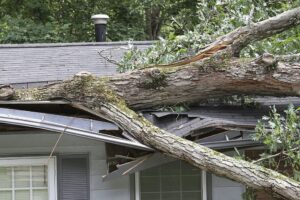Your home’s siding is more than just a decorative feature; it’s a critical protective layer that shields your home from harsh weather, pests, and environmental wear. With the right care and maintenance, your siding can stay beautiful and effective for years, adding to your home’s curb appeal and value. Regular maintenance doesn’t have to be complicated or time-consuming, but it’s essential to keep your siding in top shape. Here’s a comprehensive guide on how to maintain your siding for lasting beauty and protection.

1. Regular Cleaning to Prevent Buildup
Dirt, dust, mold, and mildew can accumulate on your siding over time, especially if your home is in a humid or rainy area. Regular cleaning prevents these contaminants from settling in and keeps your siding looking fresh. Most siding types, including vinyl, fiber cement, and wood, can be cleaned with mild soap, water, and a soft brush or cloth.
For vinyl siding, a simple mix of water and mild dish soap is often enough. For tougher stains, try a solution of water and vinegar or a small amount of bleach diluted with water. Fiber cement and wood sidings should also be cleaned gently, but be cautious with water pressure, as high-pressure washers can cause damage.
Cleaning Tips:
- Use a soft brush or a microfiber cloth.
- Rinse from top to bottom to prevent streaking.
- Avoid high-pressure washing directly, as it can crack or damage siding materials.
2. Inspect for Damage Regularly
At least twice a year, take a walk around your home to inspect the siding for any signs of damage, like cracks, chips, warping, or gaps. Pay special attention after extreme weather, such as heavy rain, snowstorms, or high winds. Even minor damage can lead to bigger issues if left unattended, such as water infiltration, mold, or insect infestation.
Signs to Look Out For:
- Cracks, holes, or chips in the siding.
- Loose or missing panels.
- Mold, mildew, or signs of rot.
- Fading or peeling paint, especially for wood siding.
3. Repaint or Restain as Needed
Wood and fiber cement sidings may require periodic repainting or staining to maintain their appearance and protect them from the elements. Repainting not only keeps your home looking fresh but also provides a protective layer that can extend the lifespan of the siding.
Depending on the climate and the type of siding, it’s generally recommended to repaint wood and fiber cement siding every 5-10 years. For vinyl siding, repainting isn’t typically necessary unless you want to change the color, as most vinyl is fade-resistant.
Tips for Painting or Staining:
- Clean the siding thoroughly before painting.
- Use a high-quality, exterior-grade paint or stain.
- Choose weather-resistant finishes for added protection.
4. Seal Gaps and Joints to Prevent Moisture Damage
Moisture is one of the biggest threats to siding. Over time, small gaps or cracks can develop around windows, doors, and joints where water can seep in. Sealing these gaps with high-quality caulk prevents moisture from entering, reducing the risk of rot, mold, and mildew growth.
How to Seal Gaps:
- Check around windows, doors, and corners for any gaps.
- Use a weather-resistant caulk designed for outdoor use.
- Apply caulk in a smooth, even line, ensuring all gaps are filled.
5. Control Vegetation Around Your Home
Trees, shrubs, and vines growing close to your siding can trap moisture, scratch the surface, or even cause cracks if they push against the siding. Regularly trim back any vegetation to prevent it from making contact with your siding. Keeping a clear space around your home also promotes airflow, helping to keep the siding dry and less prone to moisture damage.
Vegetation Management Tips:
- Keep trees and shrubs at least a foot away from your siding.
- Avoid letting ivy or vines grow directly on the siding.
- Remove any leaves or debris that collect near the base of your home.
6. Address Mold, Mildew, and Algae Growth
Mold, mildew, and algae can develop on siding, especially in damp or shaded areas. Left unchecked, they can discolor your siding and create a musty odor. Cleaning these growths as soon as you spot them is key to preventing permanent damage. For mold or algae, a mixture of water, white vinegar, and a small amount of bleach can be effective.
How to Remove Mold and Mildew:
- Mix one part bleach to four parts water in a spray bottle.
- Apply the solution to affected areas and let it sit for a few minutes.
- Scrub gently with a brush, then rinse with water.
7. Protect Against Pest Damage
Insects and small animals can damage your siding by chewing or creating nesting areas. Termites, carpenter ants, and rodents can cause particular issues with wood siding. Regularly inspect your siding and foundation for any signs of pest damage, like small holes or gnaw marks. To prevent this, keep your yard clean, seal any holes or gaps, and consider professional pest control treatments if needed.
Pest Prevention Tips:
- Seal cracks or gaps where pests can enter.
- Trim tree branches and shrubs away from the siding.
- Keep food sources, like pet food or garbage, away from your home’s exterior.
8. Check and Maintain Caulking Around Windows and Doors
The caulking around your windows and doors can wear out over time, allowing moisture to seep behind the siding. Checking and replacing old caulking every few years will help maintain a watertight seal. Use exterior-grade caulk that’s compatible with your siding material to ensure it adheres properly.
How to Check and Replace Caulking:
- Inspect caulk for cracks, peeling, or gaps.
- Remove old, damaged caulk with a utility knife.
- Apply new caulk evenly, ensuring it fills the entire joint.
9. Avoid Direct Heat Sources Near Siding
Some types of siding, especially vinyl, can warp or melt when exposed to intense heat. Keep grills, fire pits, and outdoor heaters at a safe distance from your siding to avoid heat damage. Additionally, reflective windows can sometimes focus sunlight on siding, causing it to overheat; adding shade elements like awnings can help mitigate this issue.
Heat Protection Tips:
- Keep grills and fire pits at least 10 feet from the siding.
- Avoid placing heaters close to siding materials.
- Install awnings or landscaping features for shade if needed.
10. Address Loose or Damaged Panels Promptly
If you notice any loose or damaged siding panels, it’s essential to address them as soon as possible. Wind and water can worsen the damage, potentially causing more significant issues. Minor repairs are often straightforward, and many types of siding come with replacement parts to make repairs easy. However, if the damage is extensive, consider calling a professional to ensure the repair is done correctly.
How to Fix Loose or Damaged Panels:
- For minor issues, use a hammer or adhesive to secure the panel.
- Replace broken panels with new ones if possible.
- Seek professional help for extensive or complicated repairs.
11. Schedule Professional Inspections Periodically
While regular DIY inspections are essential, a professional siding inspection every few years can catch potential issues that may not be immediately visible. Professional inspectors can check for signs of deeper water infiltration, structural problems, or wear on materials that may require repair or replacement.
Benefits of Professional Inspections:
- Identifies hidden damage or vulnerabilities.
- Provides peace of mind about your home’s condition.
- Prevents costly repairs by catching problems early.
Conclusion: Long-term Beauty and Protection Through Proper Siding Maintenance
With proper care and attention, your siding can remain beautiful and functional for years. Regular cleaning, inspection, and minor repairs will go a long way in preserving the siding’s durability and appearance. Each type of siding has unique maintenance requirements, so be sure to follow guidelines specific to your siding material.

Maintaining your siding doesn’t just keep it looking great; it also safeguards your home from the elements, pests, and structural damage. By investing a little time in regular upkeep, you’ll enjoy a well-protected, beautiful home exterior that stands the test of time.




